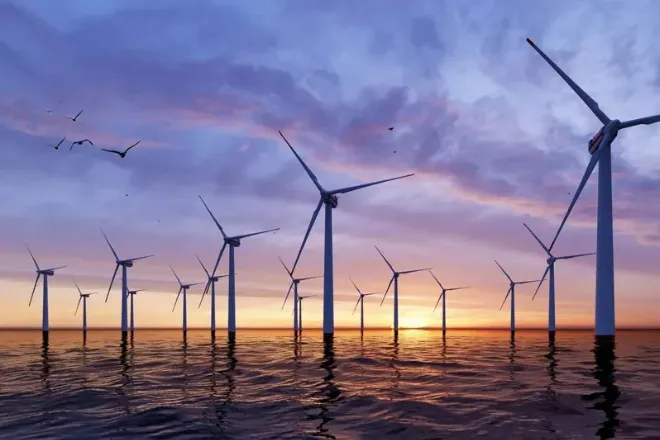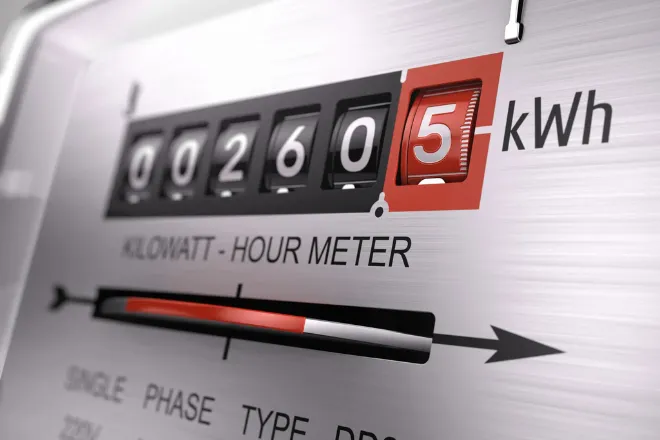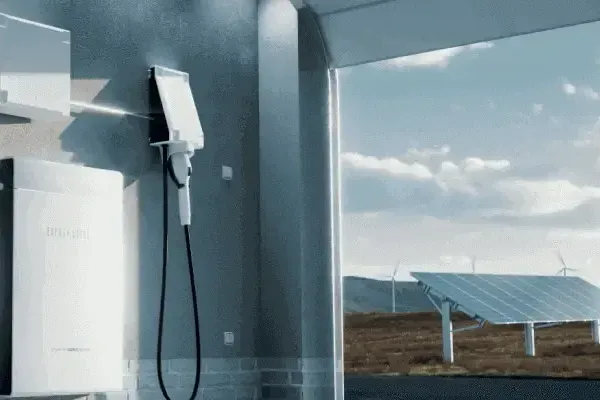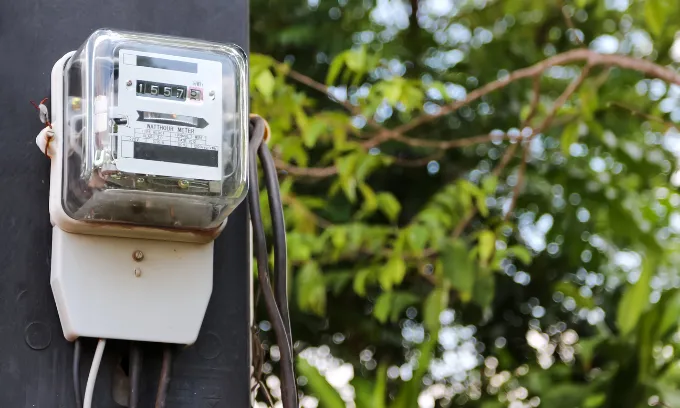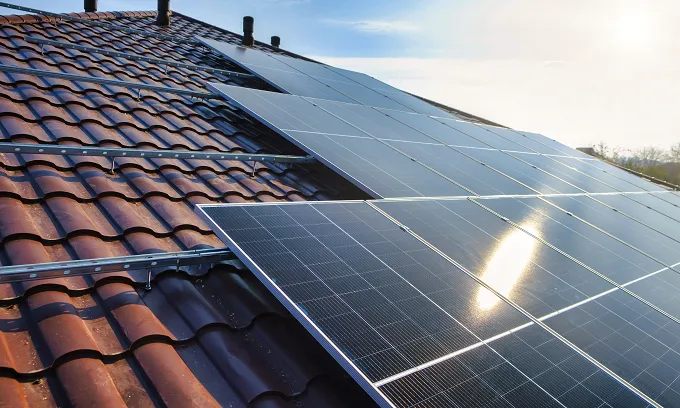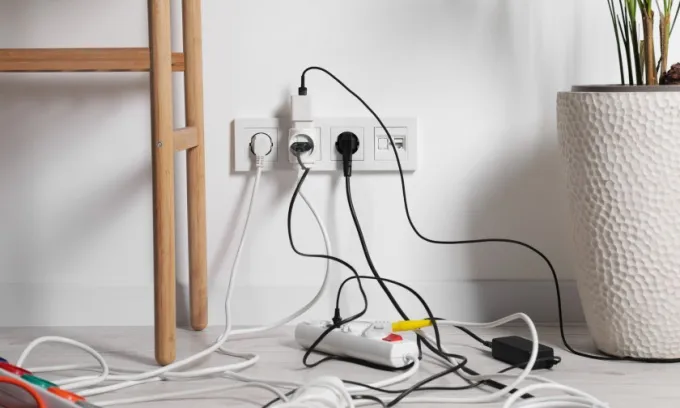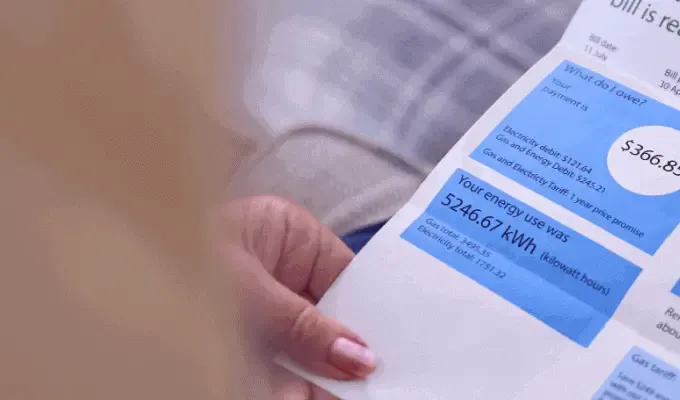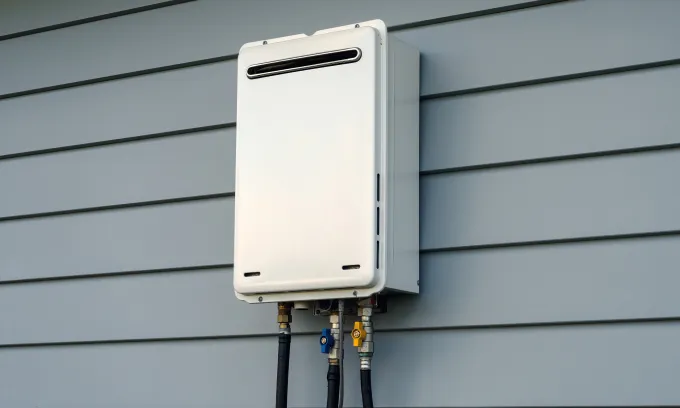How energy in Victoria works
The Victorian energy market offers customers two types of energy — electricity and gas.
If you’re interested in either or both, you’ll have to pick an energy provider and a plan.
Energy providers buy electricity or gas from the wholesale market, to be resold to you, the customer, through the provider’s plans. Every plan explains how your energy use is priced.
Providers don’t supply the energy to your homes — that’s the job of the energy distributors, which also manage and maintain the grid’s infrastructure (e.g. pipelines and utility poles).
The Victorian energy market is fully deregulated, meaning energy providers can set and sell plans with their own prices and terms, and you can choose your own plan.
However, with over 20 electricity and 15 gas providers in Victoria’s energy market, choosing the ‘right’ one for you can be stressful.
Through our comparison journey, comparing energy plans in Melbourne and the rest of Victoria is stress-free and costs nothing. If you haven’t shopped around for a while, you could save hundreds of dollars by switching plans.
Electricity in Victoria explained
In Victoria, electricity is supplied by five distributors in different regions:
Electricity distributors in VIC | Region in VIC |
|---|---|
AusNet Services | Outer northern and eastern suburbs and eastern VIC. |
Citipower | Melbourne City and inner suburbs. |
Jemena | Northern and north-western suburbs. |
Powercor Australia | Western VIC and western suburbs. |
United Energy | Mornington Peninsula and southern suburbs. |
It’s important to know your region’s distributor and its phone number in case of a power outage.
Electricity plans in Victoria
Every electricity plan charges you for every kilowatt hour (kWh) of electricity you’ve actually used. Advertised annual price estimates in Victoria are based on the same annual electricity use estimates, calculated by the Essential Services Commission (ESC).
For example, the annual electricity use estimate in the Citipower network is 4,000 kWh a year, but this differs between distributors.
Two categories of electricity plans are offered in Victoria: market offers and standing offers.
Market offers
Market offers use attractive rates and discounts to entice new customers.
- To be on a market offer, you must sign up for one.
- Market offers have a fixed contract length before expiring.
- Most market offers are ‘variable rate’, meaning rates could increase before they expire.
- Alternatively, a fixed rate plan locks in rates for the contract duration, but they are fairly uncommon.
- Discounts are only applicable during a plan’s contract length or benefit period — this can be found on its energy fact sheet.
Standing offers
Standing offers, also called the Victorian Default Offer (VDO) in Victoria, follow the reference price set by the ESC every 1 July.
The VDO shields Victorians who don’t engage with the energy market from overpaying for electricity. The VDO’s price is also an easy point of reference against other market offers. Price differences are expressed simply as a percentage (%) in relation to the reference price.
- If you’ve not changed plans for a long time, your original market offer (if any) may have expired. That means your provider may have already switched you over to its standing offer.
- If you're on a standing offer, you won't have access to the most competitive rates your provider may offer. We strongly recommend switching to potentially save hundreds of dollars.
- Market offers can still be priced higher than standing offers, but this is rare.
- Standing offers do not have a contract length, meaning you can stay on as long as you want.
- Standing offers don’t have any discounts.
- The VDO’s price differs depending on the distributor in your area.
The cheapest electricity plans in VIC
Here’s a handful of the cheapest electricity market offers on our database in VIC.
Provider | Plan name | Est. annual cost (inc. all discounts) | Est. annual cost (ex. conditional discounts) | Reference price comparison (Energy Fact Sheet) |
|---|---|---|---|---|
Kogan | Kogan Energy for current FIRST members | $1,200 | $1,300 | 16% less |
ENGIE | ENGIE Everyday | $1,236 | $1,236 | 20% less |
Sumo | Sumo Sunrise | $1,238 | $1,238 | 20% less |
OVO Energy | The One Plan | $1,291 | $1,291 | 16% less |
Electricity prices and rates in Victoria
If you look at your power bill, you’ll notice that your plan is broken down into two charges:
- Supply charges: A daily fixed cost you pay (in c/day) to remain connected to the power grid.
- Usage charges: A cost (in c/kWh) that varies with every kWh of electricity consumed.
When providers set their plan’s usage rates, they use different tariffs or pricing structures. In Victoria, there are six different tariffs to choose from:
Tariff name | Description | Do you need a smart meter installed?* |
|---|---|---|
Single rate | A single rate throughout, regardless of the time of day. | No. |
Block rate | One rate for the first electricity ‘block’ and another for the remainder. | No. |
Flexible pricing | Different rates in peak, off-peak and shoulder periods. | Yes. |
Time of use (ToU) | Different rates in peak and off-peak periods. | Yes, or a separate CL meter installed instead. If you don’t have either, please contact your region’s distributor for one. |
Demand | Supply and usage charges plus a ‘demand’ charge. | Yes. |
Controlled load (CL) | Power-intensive appliances (e.g. hot water systems) are metered separately. | Yes. |
*99% of Victorians already have smart meters installed in their homes.
On market offers, you can expect to see discounts applicable during a plan’s contract length or benefit period, such as:
- Conditional discounts: A discount if you’ve met specific conditions (e.g. paying by direct debit). Conditional discounts may be included in a plan’s advertised price. If you fail to satisfy the criteria, you won’t get the discount.
- Dual fuel discount: A discount for bundling an electricity and gas plan. Dual fuel discounts do not guarantee the highest savings. You could potentially save more by having separate electricity and gas plans with different providers. We recommend working out if the savings from having separate plans are worth more than the dual fuel discount.
- Guaranteed discounts: A discount with no conditions to meet, usually expressed as a percentage off a plan’s listed price.
- Reward programs: Some plans offer free access to reward programs, to earn points for every dollar spent on bills, which you can usually redeem for rewards (e.g. theme park tickets) via the provider’s online portal.
Pricing information can be found on a plan’s energy fact sheet. In Victoria, they are called Victorian Energy Fact Sheets (VEFs).
With our energy comparison platform, you can easily view any plan’s VEF by clicking the ‘Basic Plan Information’ prompts on the results page.
How to find the best energy plans in Victoria
Choosing the right electricity plan is more than just choosing the cheapest market offer.
How much electricity you use
If an electricity plan has higher supply charges, expect lower usage charges, and vice versa. This means that if you don’t use much electricity, a plan with lower supply charges may be cheaper, while if you use a lot of electricity, a plan with lower usage charges may be cheaper.
When you use the most electricity
- If you use more electricity during peak hours, a single rate tariff may be cheaper than a time of use (ToU) tariff.
- If you use less electricity during peak hours, a ToU, demand or flexible tariff may be cheaper than a single rate tariff.
- If you have a power-intensive appliance (e.g. pool pump), a CL tariff could save you more money if you’re willing to shorten its operating hours.
Be wary of hidden fees
Energy plans may be hiding additional fees. You don’t want to be left paying more than you should.
Don’t look at discounts alone
Discounts can be misleading. A generous discount can disguise much higher usage and supply charges. Always study every electricity plan in full.
Gas in Victoria explained
Gas distributors in Victoria
In Victoria, gas is supplied by three distributors:
Gas distributors in VIC | Region in VIC |
|---|---|
AusNet Services | Eastern and western Victoria. |
Australian Gas Networks (AGN) | Melbourne CBD, north and north-east VIC, south east of Frankston and Cranbourne, regional areas such as Bairnsdale. |
Multinet | Melbourne’s inner and outer east, Yarra Ranges and South Gippsland. |
Typically, you’ll only need to contact your gas distributor to set a gas connection at your home, if there is a gas outage, or if you want to submit a manual gas meter read you've conducted yourself.
Gas plans in Victoria
Gas plans share several features with electricity plans.
Instead of kWh, providers bill you based on your actual gas usage, which is measured in megajoules (MJ).
Canstar's price estimates are based on a general annual gas usage (e.g. 40,500 MJ per year on the AGN). Canstar calculates this figure based on the average advertised usage from a selection of retailers.
There are two types of natural gas plans: market contracts and standing contracts.
Market contracts
Market contracts are freely set by the provider with their preferred gas rates, terms and discounts.
- These contracts are almost always better value than standard contracts.
- Market contracts can have either fixed or variable usage rates. Variable usage rates can change frequently, while fixed rates are locked in until the contract expires.
- Market contracts can cost more than standing contracts, but this is not common.
Standing contracts
Standing contracts (also called standing offers) are regulated by the Victorian Government to give Victorians a fair gas price.
- Standing offers reflect the highest price a provider will charge you for gas and are generally considered poor value.
- If you’re on a standing contract, switching to a market contract could potentially save you lots of money.
- Standing contracts don’t offer discounts.
- Standing contracts don’t have a contract period, so you can stay on one indefinitely.
The cheapest gas plans in VIC
Here’s a handful of the cheapest gas market contracts on our database in VIC.
Provider | Plan name | Est. annual cost (inc. all discounts) | Est. annual cost (ex. conditional discounts) | Energy Fact Sheet |
|---|---|---|---|---|
CovaU | Super Saver | $1,336 | $1,336 | |
GloBird Energy | GloBird BOOST Residential(Central)-Australian Gas Networks | $1,351 | $1,351 | |
Powershop Australia | Power House | $1,386 | $1,486 | |
Kogan | Kogan Energy - FIRST | $1,428 | $1,428 |
Gas prices and rates in Victoria
Gas pricing has many similarities to how electricity plans are priced. On your gas bill, you’ll see two different charges:
- Supply charges: A daily fee for being connected to the gas network.
- Usage charges: The usage rate applies to gas that you actually use and is measured in cents per MJ.
Their usage charges are priced according to two tariffs:
- Single rate tariffs: A fixed rate for gas usage throughout the day.
- Block rate tariffs: Customers are charged differently based on how much gas they’ve used. For example, a rate of 3c/MJ may apply to the first 40-MJ of gas used in one day, and the next 40MJ may then be charged at a rate of 2c/MJ.
Depending on the plan and provider, there may also be additional discounts, such as direct debit or pay on time.
All this information can also be found on a plan’s fact sheet. On our energy comparison platform, you can access a plan’s fact sheet by clicking on the ‘Basic Plan Information’ prompt below each plan.
How to find the best gas plans in Victoria
Knowing how you use gas
Customers who use less gas will typically save more on a plan with lower supply charges, while those who use more gas will typically save more on a plan with lower usage charges.
Similarly, if your home uses little gas, a single rate tariff may be the cheaper option, while if your home uses a lot of gas, a block rate tariff may be more affordable.
Understanding gas discounts and hidden fees
Like electricity plans, discounts may be tempting, but they can conceal higher gas rates.
Plans may also come with hidden fees such as a disconnection charge. It always pays to be alert about your plan’s fine print.
Solar in Victoria explained
Unlike electricity or gas, there’s no such thing as a solar plan that supplies you with 100% solar power.
Instead, your provider pays you with a credit for your excess solar (a feed in tariff).
Solar feed in tariffs in Victoria
A solar feed in tariff (FiT) rewards you with bill credits (in c/kWh) for excess solar exported from your rooftop solar to the grid.
If you don’t have a rooftop solar system, you can visit our guide on all things solar to get started.
Customers can choose between two types of FiTs — ‘Flat FiTs’ and ‘Time-varying minimum FiTs’.
Flat feed in tariff
A flat FiT means that the rate you’re paid remains the same at all hours of the day.
Starting July 1 2025, the minimum flat solar feed-in tariff was revised to 0.04 c/kWh.
Time-varying minimum feed in tariff
A time-varying FiT pays you different rates, depending on the hours of the day you export solar.
Starting July 1 2025, Victorians who prefer a time-varying FiT may choose between the following options:
Time-varying minimum rates | ||
|---|---|---|
Option 1 | ||
Overnight | Day | Early evening |
7.55 c/kWh | 0.00 c/kWh | 5.91 c/kWh |
Option 2 | ||
Shoulder | Off-peak | Peak |
1.42 c/kWh | 0.00 c/kWh | 6.57 c/kWh |
Source: Essential Services Commission, September 2025.
Which option is cheaper will depend on the hours you export the most solar to the grid.
For a deeper dive into solar FiTs in Victoria, you can visit our guide on the best solar feed-in tariffs in VIC.
Choosing the right Victorian solar feed in tariff
- A high solar FiT sometimes masks more expensive usage and supply charges — you may be spending more than you’re actually saving from your FiT.
- Some solar FiTs offer higher rates for a capped amount of exported solar, before decreasing to a lower rate for the remainder (e.g. 10c/kWh for the first 22kWh per day, 3.3c/kWh after).
- If you’re keen on installing a solar system, consider how long it would take your FiT savings to offset the money spent on purchasing and installing it.
How to switch energy plans in Victoria
Step 1: Check your eligibility to switch plans
Homeowners and renters should be able to switch providers with no hassle. However, there are cases where switching might not be an option.
Electricity
- Embedded networks: If you live in an apartment building, caravan park or retirement village, you may be part of an embedded network, which means a site owner buys and sells energy to its residents. In Victoria, customers in an embedded network have the right to switch, but it’s a much more complex process than a standard connection. Contact your site owner or body corporate to verify if you’re in an embedded network.
- Your landlord pays the bills: If your energy bill is included in your rent, you probably won’t be able to switch providers, as your landlord’s name will be on the bill. This will likely be written in your rental agreement.
Gas
- Check if you have a gas connection: If you’ve never been on a gas plan, your home must first have a gas connection set up. Contact the gas distributor in your area to kickstart the process. Keep in mind that new gas connections will cost extra.
- If your home is not located close to a gas mains: If you live away from a gas mains (i.e. rural areas), liquefied petroleum gas (LPG) could be an alternative. Be wary that natural gas-powered appliances cannot be powered by LPG.
Step 2: Check your current bill
It’s important to understand the rates you’re paying and the discounts you’re enjoying before shopping around for other plans.
You can refer to your latest bill as a benchmark against other plans you’re interested in. Under the ‘Energy usage summary’ section, you can see your estimated electricity/gas usage throughout the year as a benchmark for future usage.
Your bill will also provide insight into whether you can save money with a cheaper plan from your existing provider. Victorian laws require energy companies to inform customers if there is a better offer available. The Best Offer information can be found on your bill under ‘Could you save money on another plan?’.
If you’d like help with navigating your power bill in full, you can visit our guide on reading energy bills.
Step 3: Compare energy plans based on price
Using Canstar’s fuss-free comparison platform, you can sort plans available in your postcode by price.
You can also filter these results for your specific needs:
- Bill details
- Billing periods
The results will provide you with an estimated annual cost and easy access to a plan’s fact sheet.
Step 4: Check tariff type, FiTs and contract terms
Understanding your household energy use will reveal how you can benefit from different plans, tariff types and FiTs.
Study your options and never rush headfirst into a plan without understanding its terms and conditions — all this information can be found in a plan’s fact sheet.
Step 5: Review your current plan’s exit fees
Read your current plan’s fine print or fact sheet for any exit fees, or fees for termination or disconnection, which will usually be added to your final bill.
Step 6: Sign up with your new provider
Follow Canstar’s energy comparison platform through to your new provider’s website. Keep in mind that switching will require a few extra steps:
Electricity
- You will need to provide your National Meter Identifier (NMI), which can be found on your electricity bills. This is how your provider knows which meter is yours.
- Your new provider may request a credit or identification check before confirming your plan.
- There is no need to contact your old provider and advise them of the switch. Your new provider will handle that for you.
- There is usually a 10-day cooling-off period after you sign up for your new plan. This gives you time to thoroughly read through your new plan’s welcome pack or change your mind.
- Your electricity supply should not be interrupted during the switching process.
Gas
- You will need to provide your DPI (Delivery Point Identifier), which can be found on your gas bill. This is how your provider knows which meter is yours.
- Your new provider may request a credit or identification check before confirming your plan.
- There is no need to contact your old provider and advise them of the switch. Your new provider will handle that for you.
- A final meter reading will be conducted by your old provider to determine your final bill. The time taken depends on when your last meter read was and how frequent your billing cycle is.
- There is usually a 10-day cooling-off period after you sign up for your new plan. This gives you time to read through your new plan’s welcome pack before changing your mind.
- Your gas supply should not be interrupted during the switch.
Step 7: Review your plan as needed
Keeping engaged with the market is the best way to ensure you have the best value plan. There are a few times a year when it may be worth reviewing your plan:
- When your contract expires: Most providers will change your market offer plan to their standing offer (or market offer for gas) once your initial contract has expired. This means your bill could increase dramatically.
- 1 July (only for electricity): When the Victorian Default Offer (VDO) changes every year on 1 July, your electricity provider will typically adjust their rates.
- If your bill is too high: Those on a variable rate plan may find their rates changing frequently throughout the year. Customers may find themselves paying much more for their plan than when they signed up.
If you sign up for our newsletter, we’ll send you timely reminders to check your energy plan at certain times of the year.
Victorian energy rebates and concessions
If you’re struggling to pay your electricity or gas bills, the Victoria state government may offer you financial support, depending on your eligibility.
Power Saving Bonus
Energy type
Electricity and gas
Eligibility*
Pensioner Concession card, Health Care card or Veterans’ Affairs Gold card holders.
Rebate amount
$100 payment.
Where to apply
Submitted online via Victorian Energy Compare or at participating community organisations.
Annual Electricity Concession
Energy type
Electricity
Eligibility*
Pensioner Concession card, Health Care card or Veterans’ Affairs Gold card holder.
Rebate amount
17.5% of your total bill after discounts and credits
Where to apply
Call your electricity provider to apply. You may also be able to apply via their website.
Excess Electricity Concession
Energy type
Electricity
Eligibility*
- Have annual electricity costs above $3,895.13.
- Pensioner Concession card, Health Care card or Veterans’ Affairs Gold card holder.
Rebate amount
17.5% of your total bill after discounts and credits.
Where to apply
- Your provider will verify your eligibility before sending you an application form.
- Complete the form and send it to the Department of Families, Fairness and Housing.
- Once the application is processed, your retailer will apply the Excess Electricity Concession to your next bill.
Winter Gas Concession
Energy type
Gas
Eligibility*
- Gas bill must not exceed $2,499.14 for the winter period (May 1 to October 31).
- Pensioner Concession card, Health Care card or Veterans’ Affairs Gold card holder.
Rebate amount
17.5% of your total bill after discounts and credits (does not apply to the first $62.40 on your bills during the six-month winter period).
Where to apply
- Call your energy provider to apply.
- You may also be able to apply via their website.
Excess Gas Concession
Energy type
Gas
Eligibility*
- Gas bill exceeds $2,499.14 for the winter period (May 1 to October 31)
- Pensioner Concession card, Health Care card or Veterans’ Affairs Gold card holder
Rebate amount
17.5% of your total bill after discounts and credits (does not apply to the first $62.40 on your bills during the six-month winter period).
Where to apply
- Call your energy provider to apply.
- You may also be able to apply via their website.
Life Support Concession
Energy type
Gas
Eligibility*
- Approved machines using a minimum of 1,880 kWh per year:
- Intermittent peritoneal dialysis machines
- Oxygen concentrators
- Haemodialysis machines.
- Pensioner Concession card, Health Care card or Veterans’ Affairs Gold card holder.
Rebate amount
For electricity: 1,880 kilowatt hours (470 kilowatt hours per quarter) of electricity annually, calculated using the general tariff of your electricity retailer.
Where to apply
Call your electricity provider and request a ‘Medical Confirmation Form’.
Medical Cooling Concession
Energy type
Electricity
Eligibility*
- Be diagnosed (or have a household member) with a pre-approved condition, such as:
- Multiple Sclerosis
- Lymphoedema
- Parkinson’s disease
- Fibromyalgia
- Post-polio Syndrome/Poliomyelitis
- Motor Neuron Disease.
- Be a Pensioner Concession card, Health Care card or Veterans’ Affairs Gold card holder.
Rebate amount
17.5% of usage and service charges after discounts and credits between November 1 and April 30 (Winter).
Where to apply
- Request an application form from your provider.
- Fill up and complete the form (with a signature and declaration filled by your doctor).
- Submit the completed form to your provider.
Non-Mains Energy Concession
Energy type
LPG, wood for heating, cooking or boiling hot water, heating oil, electricity accessed via an embedded network or generator fuel.
Eligibility*
- Pensioner Concession card, Health Care card or Veterans’ Affairs Gold card holder.
- For firewood applications:
- Fire must be the exclusive source of heating.
- You must complete a declaration form confirming this during the application process.
- For generator fuel applications:
- Your home must not be connected to the grid.
- You need to complete a declaration confirming this and that the invoices you provide are for generator fuel.
Rebate amount
- $57 for spending from $100 to $334.99
- $176 for spending from $335 to $1006.99
- $293 for spending from $1007 to $1674.99
- $418 for spending from $1675 to $2390.99
- $535 for spending from $2391 to $3058.99
- $650 for spending $3059 and above
Where to apply
Apply online through the Victorian concessions and allowances portal.
Utility Relief Grant Scheme
Energy type
Electricity and gas
Eligibility*
- Pensioner Concession card, Health Care card or Veterans’ Affairs Gold card holder.
- If the account holder doesn’t hold any of the above cards, they must prove that they cannot afford to pay the bill while also proving that they are impacted by the following:
- An unexpectedly high cost for essential items
- Someone at their property has experienced domestic violence.
- A recent drop in income or rent/mortgage costs is over 30% of their income.
Rebate amount
Up to $650 per utility type over two years, or $1,300 over two years for households using a single source of energy (electricity only)
Where to apply
- Contact your electricity, gas or provider to request an application (to be completed online).
- Your retailer will assess your situation before providing you with one.
*For more eligibility information, visit the Department of Families, Fairness and Housing VIC’s official website.
Source: Department of Families, Fairness and Housing, November 2025



